
Home > The Essential Guide to Generating MQLs: Tactics & Criteria for Success for SaaS Products
Table of Contents
ToggleMQLs are what runs your Saas business. As per research data, companies that excel at lead nurturing produce 50% more sales-ready leads while reducing the cost per lead by 33% [Source].
But let’s be honest, generating MQLs is easier said than done. It requires understanding customers, targeting effectively, and aligning marketing with sales.
That’s where this guide comes in.
We’ve compiled a comprehensive resource that will take you through all the crucial things you need to know about generating MQLs – from lead scoring and nurturing to content marketing and data optimization.
Let’s get started!
Knowing your target audience is like having a compass in a stormy sea. It guides your every move and helps you navigate toward success.
Here’s how you can lead the process:
First things first, you require to define your target audience. Who are you trying to reach? What are their demographics, interests, and behaviors?
If you don’t clearly understand who your target audience is, you’re essentially shooting in the dark hoping you hit the right buyer.
By understanding their needs, you can create targeted messaging and campaigns that resonate with them, persuading them to take action.

Developing buyer personas is like creating characters for a story. Each persona represents a unique individual with their own needs, goals, and challenges.
Developing these personas allows you to create marketing messages and content that resonates with each character.
Market research can involve analyzing industry trends, surveying customers, and gathering data on your competitors.
For example, suppose you’re a SaaS company that provides email marketing software. In that case, you might conduct market research to understand what features your competitors offer, how your target audience uses email marketing, and what pain points they have with current solutions.
Understanding pain points and challenges are key to unlocking your customer’s needs and want. Conduct in-depth customer research to gather qualitative and quantitative data and gain insights into their unique pain points. This can be done through
Create prototypes or minimum viable products (MVPs) that address the identified pain points. Share these prototypes with your target customers and gather their feedback. This feedback loop allows you to validate assumptions and make necessary adjustments early in the development process.
✅ Iterate and refine your product based on customer feedback.
✅ Continuously seek input from your customers.
✅ Conduct user testing, and implement improvements that directly address their pain points.
✅ This iterative approach ensures that the final product is well-aligned with customer needs.
Track KPIs such as:
Now, let’s say – you’re scrolling through a website, and suddenly a pop-up appears, offering a free guide in exchange for an email address. You might be hesitant at first, but then you see that it is precisely on what you’ve been looking for. So you decide to sign up and receive the guide.
This is a perfect example of a lead magnet.
It’s an irresistible offer that captures your attention and encourages you to take action. Creating a lead magnet can be the key to unlocking your lead generation potential as a business owner.
Lead magnets can be anything from
The key is to provide value that your target audience is exactly interested in.
But how do you select the right lead magnet for your audience? Well, it all starts with understanding their pain points and needs.
Once you’ve decided on your lead magnet, it’s time to create a compelling offer. This involves crafting a catchy headline highlighting the benefits of your offer and creating a sense of urgency.
Did you know that landing pages can significantly impact your website’s conversion rate? In fact, according to studies, companies with 30 or more landing pages can generate 7X more leads than those with less than ten landing pages. [Source]
So, what exactly is a landing page?
A landing page is a standalone page-it is designed to convert visitors into leads. It’s typically used as a destination for paid advertising or email marketing campaigns.
The primary key to a successful landing page is to make it clear, concise, and focused on a single call to action. This means removing any distractions, such as navigation menus or links to other pages on your website. Instead, your landing page should be laser-focused on the offer or product you’re promoting.

The major elements of an effective landing page are:
Your headline should be persuasive and communicate the value proposition of your offer.
A subheading can provide additional context and reinforce the message of your headline.
A high-quality image or video can help visually reinforce your message and create a more engaging user experience.
Clearly outline the benefits of your offer in a bullet-point list or short paragraph. This helps highlight your offer’s value and entice visitors to take action.
Including social proof, like customer testimonials, case studies, or reviews, can help to build trust and credibility with your audience.
Your CTA should always stand out and let your prospects know the next step you want visitors to take, i.e., signing up for a free trial or downloading a guide.
Keep your form as short as possible. Ask for the information you require to follow up with leads. Longer forms can be a hassle to fill up and may reduce conversions.
Ensure that your landing page is optimized for mobile devices, as more users are accessing the internet on smartphones and tablets.
Also, optimize landing pages for core web vitals. Here’s how:
| Core Web Vitals | Optimization Techniques |
|---|---|
| Largest Contentful Paint (LCP) |
|
| First Input Delay (FID) |
|
| Cumulative Layout Shift (CLS) |
|
Note: Test your page using tools like Google PageSpeed Insights or Lighthouse to identify specific areas for optimization.
Moreover, A/B testing is a powerful tool that allows testing multiple versions of the landing page to observe which one performs better. By making minor changes to your landing page and testing them, you can optimize your page for conversion rates and get better results.
So, how do you leverage A/B testing to improve your landing page?
Step 1
– First, identify the elements that you want to test. This could be your headline, call to action, images, or copy.
Step 2
– Next, create two versions of your landing page – one with the original element and one with the new element you want to test. Ensure the only difference between the two versions is the element you’re testing.
Step 3
– Now, it’s time to run your A/B test. Show one version of your landing page to one group of visitors and the other version to a different group of visitors. Use A/B testing tools to split your traffic and track the performance of each version.
Step 4
– Once you have enough data, analyze the test results – get insights into which version performed better. It’ll give you valuable insights into what works and doesn’t for your landing page.
A/B testing is an ongoing process. Keep testing and tweaking your landing page to optimize it for conversion rates. With A/B testing, you can take the guesswork out of optimizing your landing page and get better results for your business.
Also, keep your page well-structured – it should be easy to navigate and focused on the main message and the CTA. A cluttered and confusing landing page will only turn your visitors away.
Email marketing has an average ROI of $40/42 for every $1 spent, a 4,200% ROI [Source]!!
That’s right – it can help you generate leads and build relationships with your audience.
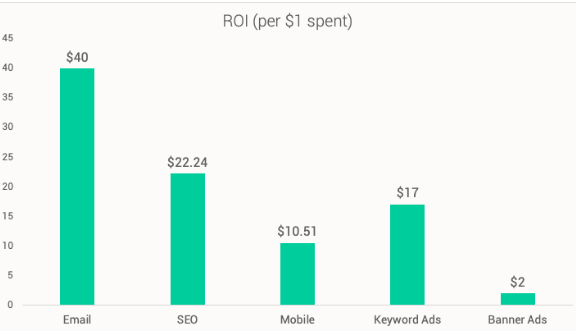
But there are different types of email campaigns, each serving different purposes. To choose the correct one for your lead generation efforts, here are some options to consider:
Suppose you’re a business owner who’s just launched a new product or service. You’re excited about it and know it can help your target audience. But the problem is you don’t have leads yet. What do you do?
That’s where cold emails come in. With the right strategy, cold emails can help you generate new leads and drive sales.
But remember that you’re reaching out to prospects who may not be acquainted with your business. You must make a solid first impression.
Let’s check out a few tips to make your cold email campaigns more engaging:
✅ Personalize your emails
✅ Provide value
✅ Keep it short
✅ Add case studies
✅ Clear call to action
✅ Follow-up
These are regular emails you send to your subscribers, providing them with updates, news, and engaging content related to your business. Newsletters are a great way to develop relationships with your audience, and it helps to keep them engaged with your brand.
As we discussed earlier, lead magnets are incentives that you offer in exchange for contact information. Once someone has signed up, you can follow up with emails that provide more value and aid them in moving further down the sales funnel.
A welcome series is a set of email sequences automatically sent to new subscribers, welcoming them to your email list and introducing them to your business. These emails can help you build trust and relationships with your new subscribers.
If you have subscribers who haven’t engaged with your emails in a while, a re-engagement campaign can help bring them back into the fold. These campaigns typically involve sending emails with incentives to encourage subscribers to start engaging with your content again.
If you have an online store, abandoned cart campaigns can be a powerful way to recover lost sales. These campaigns send emails to customers who have abandoned items in the cart. It nudges them of what they left behind and encourages them to complete their purchase.
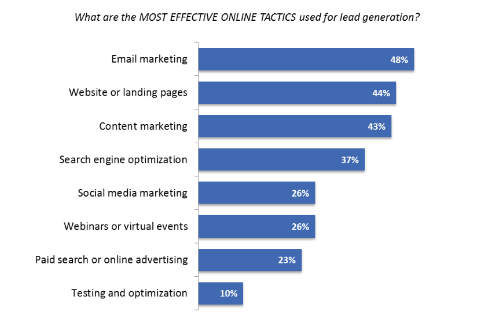
Personalized emails have 29% higher open rate, and a 41% higher click-through rate than non-personalized ones. [Source]
So, want to make your emails stand out from the crowd? Here are some unique tips to help you craft more effective email copy:
Including social proof in your email subject line or content can help build trust and credibility with your audience. For instance, you could use a quote from a satisfied customer or a statistic that highlights the success of your product or service.
Building a sense of urgency in your email subject line encourages your audience to take action. For example, you could use phrases like “Last chance,” “Limited time offer,” or “Act now” to create a sense of urgency; It prompts your readers to act quickly.
If appropriate for your brand and audience, humor in your subject line or email content can help you stand out and make your message more memorable. Just be careful to avoid going overboard or using humor that could be offensive.

People love stories. Storytelling in your email content can help build an emotional connection with your audience. Consider sharing a personal anecdote or highlighting a customer success story to make your message more engaging.
With more people engaging with content on their mobile devices, ensuring your email content is mobile-friendly is essential. Use a clear & concise writing style- also break up long paragraphs into shorter ones. Also, use a font size that’s easy to read on a small screen.
Use A/B testing to test different subject lines, content, and segmentation strategies to observe what drives the best results.
Are your social media efforts not bringing in as many MQLs as you thought? It’s time to take a fresh approach and revitalize your strategy!
With social media platforms boasting over 4.2 billion users worldwide, the potential to reach and engage with your target audience is enormous.
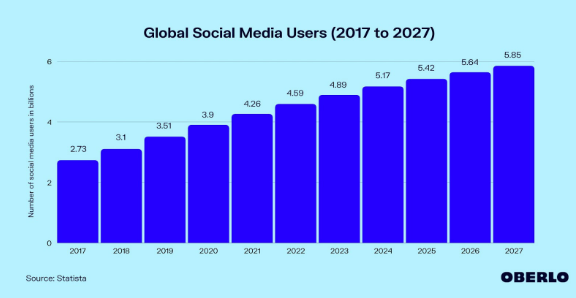
But how do you stand out?
But what good is engaging content if you don’t have a following?
Have you been scrolling through one of your favorite websites or social media platforms and caught a glimpse of an ad for a product you were considering buying? That’s the power of paid advertising. It’s a way to get your brand to the target audience and drive more sales for the business.
Paid advertising comes in many forms, including:
Also, measuring your ad performance is key to optimizing your campaigns for better results. Use analytics tools to track metrics like
It measures the percentage of users who click on a specific link or advertisement after viewing it, providing insight into the effectiveness of the ad in generating user interest.
Conversion rates measure user actions in marketing campaigns to gauge success.
ROAS assesses the profitability of advertising campaigns by calculating the revenue generated in relation to the amount spent on advertising.
Lead scoring is assigning a numerical value to leads depending on their engagement level with your brand. This allows you to prioritize your follow-up efforts. Also, it enables you to focus on the leads that are most likely to convert.
On the other hand, lead qualification involves assessing the quality of the leads based on factors such as their budget, decision-making power, and level of interest.
This helps you determine whether a lead is a quality fit for your business and whether it’s worth investing time and resources into nurturing them.
Why?
You can throw darts blindly at the board and hope to hit the bullseye, but your chances of success are slim. However, if you take the time to aim and strategically throw your darts, your chances of hitting the bullseye are much higher.
The same is true with lead scoring and qualification. By strategically targeting the leads that are most likely to convert, you increase your chances of hitting the sales bullseye.
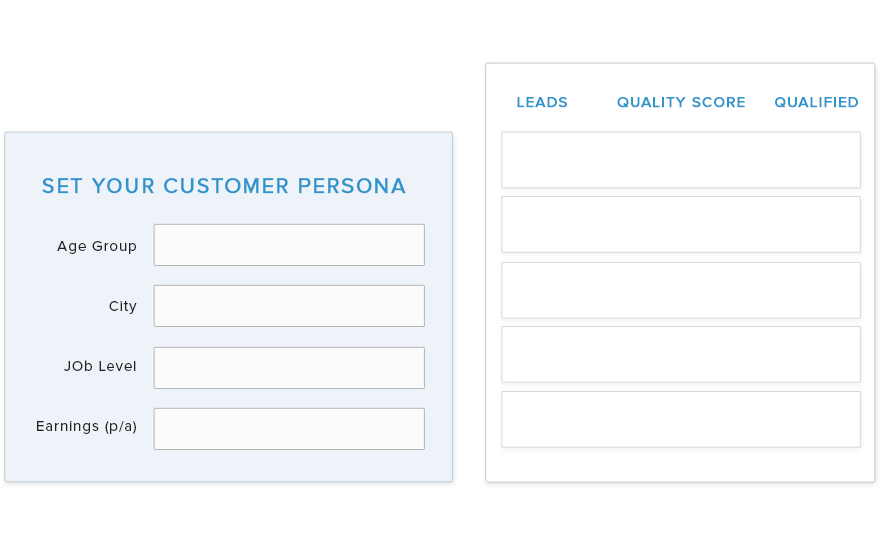
[Source]
To implement lead scoring and qualification, start by defining your ideal customer profile, by asking questions like:
Once you clearly understand your ideal customer, identify the key behaviors and characteristics that indicate a lead is a right fit for your business. Assign numerical values to these behaviors and use them to score your leads.
For example, a lead who has downloaded your ebook might receive a score of 10, while a lead who has subscribed to your email list might receive a score of 20.
Then, use lead qualification criteria to assess the lead quality and determine whether they are worth investing time and resources into. This could include factors such as company size, industry, and budget.
Continually refine and adjust your lead scoring and qualification processes based on the data and feedback you receive. By doing so, you can ascertain that you’re targeting the right leads and driving the most revenue for your business.
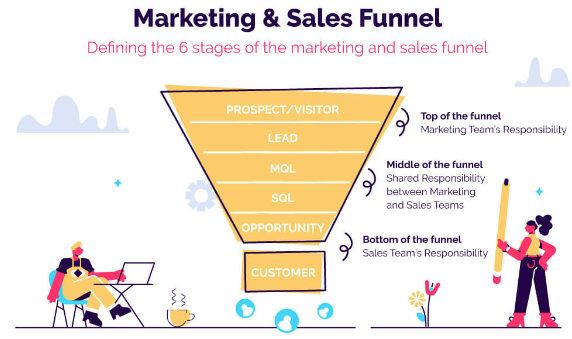
Before qualifying leads, you should know which lead type to target…
The lead matches the profile of your target audience in terms of job title, industry, company size, etc.
The lead has shown interest in your brand by downloading a whitepaper, attending a webinar, or subscribing to your newsletter.
The lead has taken specific actions on your website, like visiting certain pages or filling out a contact form.
Criteria for Sales Qualified Leads (SQLs)
The lead has the financial means to purchase your product or service.
The lead has decision-making power within the organization to make the purchase.
The lead has a specific pain point or requirement that the product or service can solve.
The lead has a specific purchase timeframe and is actively seeking a solution.
Note:These criteria can vary depending on your industry and business goals. So, it’s a wise idea to work closely with your sales as well as marketing teams to determine the specific criteria for your MQLs and SQLs.
| Stage of Lead | Objective | Action |
|---|---|---|
| MQL | Build Awareness and Interest |
|
| MQL | Establish Trust and Credibility |
|
| MQL | Evaluate Readiness to Buy |
|
| SQL | Provide Additional Information |
|
| SQL | Address Concerns and Objections |
|
| SQL | Provide Pricing |
|
Lead nurturing and conversion is a process that requires time, effort, and patience. Rushing the process or neglecting your leads can result in missed opportunities and lost potential customers. It’s an art that you can master, but only with the right ingredients and mindset.
But here’s the secret: don’t let your lead definitions gather dust. As your business and customer base grows, your prospects, buyer personas, and leads evolve too. That’s why regular revisits to your lead definitions are vital.
Ensure your marketing team huddles every quarter, discussing possible changes and gathering feedback from sales. Or better yet, ask your marketing and sales to collaborate in a dynamic meeting, updating those definitions together. Stay aware and adaptable to turn your leads into loyal customers igniting your sales engine.
Rajashree Goswami
I tweak my ideas and thoughts to create creative & narrative SaaS content. At FPGrowth, as Lead Content Writer, I underpin solutions into words, and put the assessments into threaded paragraphs to solve the readers' pain points. When not on my table, you can find me roaming around nature with...